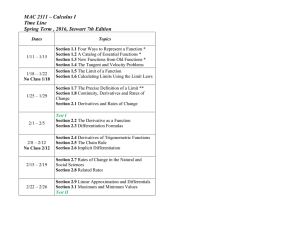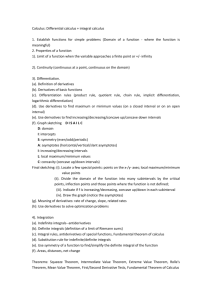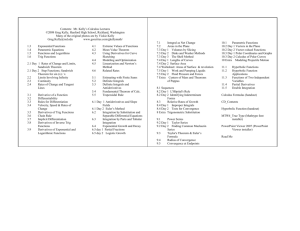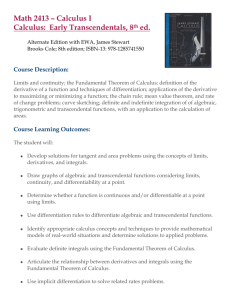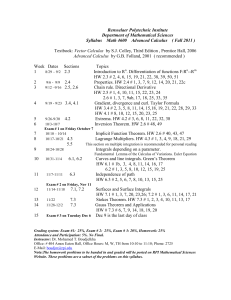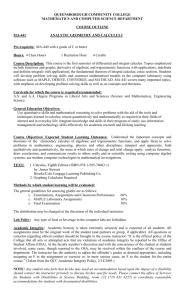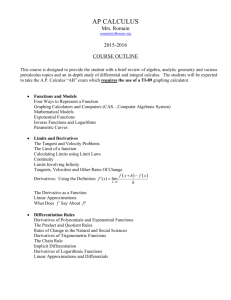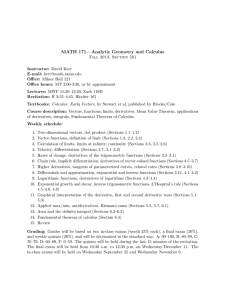JEFFERSON COLLEGE
advertisement
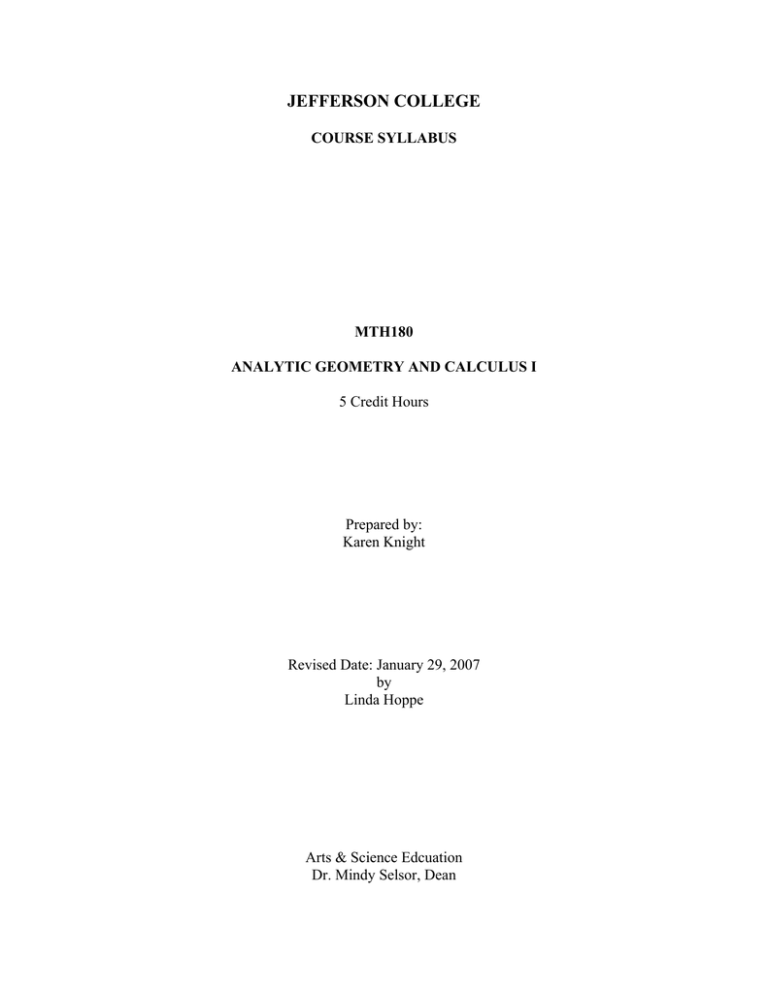
JEFFERSON COLLEGE COURSE SYLLABUS MTH180 ANALYTIC GEOMETRY AND CALCULUS I 5 Credit Hours Prepared by: Karen Knight Revised Date: January 29, 2007 by Linda Hoppe Arts & Science Edcuation Dr. Mindy Selsor, Dean MTH180 ANALYTIC GEOMETRY AND CALCULUS I I. CATALOGUE DESCRIPTION Prerequisite: ACT score of 24 or higher plus high school trigonometry, MTH141, or MTH133 and MTH134 with a grade of “C” or better. 5 semester hours credit Calculus I covers limits, continuity, differentiation, and integration. This course meets the mathematics requirement for the Associate of Arts degree. (F,S,Su) II. GENERAL COURSE OBJECTIVES Upon completion of this course the student will be able to: III. IV. A. Demonstrate understanding of vocabulary and concepts from precalculus courses. B. Understand the theory related to limits of functions and use it on specific applications. C. Understand the theory related to derivatives of functions and use it on specific applications. D. Understand the theory related to antiderivatives of functions and use it on specific applications. E. Understand the theory related to definite integrals of functions and use it on specific applications. COURSE OUTLINE A. Limits and Rates of Change B. Derivatives C. The Mean Value Theorem and Curve Sketching D. Integrals E. Applications of Integration UNIT OBJECTIVES A. Limits and Rates of Change 1. The Tangent and Velocity Problems 2. 3. 4. 5. 6. The Limit of a Function Calculating Limits using the Limit Laws The Precise Definition of a Limit Continuity Tangents, Velocities, and other Rates of Change B. Derivatives 1. Derivatives 2. Differentiation Formulas 3. Rates of Change in the Natural and Social Sciences 4. Derivatives of Trigonometric functions 5. The Chain Rule 6. Implicit Differentiation 7. Higher Derivatives 8. Related Rates 9. Differentials; Linear and Quadratic Approximations 10. Newton’s Method C. The Mean Value Theorem and Curve Sketching 1. Maximum and Minimum Values 2. The Mean Value Theorem 3. Monotonic Functions and the First Derivative Test 4. Concavity and Points of Inflection 5. Limits at Infinity; Horizontal Asymptotes 6. Curve Sketching 7. Graphing with Calculus and Calculators 8. Applied Maximum and Minimum Problems 9. Antiderivatives D. Integrals 1. Sigma Notation 2. Area 3. The Definite Integral 4. The Fundamental Theorem of Calculus 5. The Substitution Rule E. Applications of Integration 1. Area between Curves 2. Volume 3. Volume by Cylindrical Shells V. VI. METHOD OF INSTRUCTION A. Class Discussion of Homework B. Lecture REQUIRED TEXTBOOK (WITH PUBLICATION INFORMATION) Stewart, Calculus, 4th ed., Brooks/Cole Publishing Company, 1999 VII. REQUIRED MATERIALS (STUDENT) Graphics Calculator VIII. METHOD OF EVALUATION (STUDENT) A. Unit Examinations B. Comprehensive Final Exam

